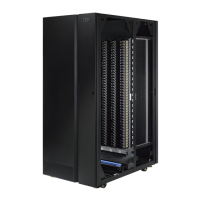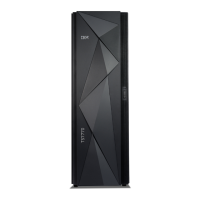Global Mirror operations periodically invoke a point-in-time FlashCopy at the
recovery site, at regular intervals, without disrupting the I/O to the source volume,
thus giving a continuously updating, nearly up-to-date data backup. Then, by
grouping many volumes into a session, which is managed by the master storage
unit, you can copy multiple volumes to the recovery site simultaneously while
maintaining point-in-time consistency across those volumes.
To better understand how Global Mirror works, you must be familiar with the
following terms:
Master
The master storage unit controls the creation of consistency groups in the
Global Mirror session. The master storage unit sends commands to
subordinate storage units. A storage unit is allowed to be a master for only
one Global Mirror session.
Subordinate
The subordinate storage unit receives commands from a master storage
unit. The subordinate storage unit is identified when a Global Mirror session
is started. The subordinate storage unit forms consistency groups and
performs other Global Mirror processing. A subordinate storage unit can
only be controlled by one storage unit master.
Session
A session is a collection of volumes across multiple storage units that are
managed together to create consistent copies of data. The session is
identified with an ID that is unique across the enterprise. The ID identifies
volumes that will participate in the Global Mirror consistency group. A
session is opened on each LSS in the enterprise that has or might have
volumes that will participate in the Global Mirror consistency group that is
associated with the specific session ID.
Control
path
The control path is established from the master storage unit to the
subordinate storage unit when more than one storage unit participates in
the Global Mirror session. If there is only one storage unit that is involved,
you do not have to create a control path. The master storage unit
communicates directly with its subordinate storage unit.
Fast restore operations
The fast reverse option allows you to reverse a FlashCopy relationship without
waiting for the background copy of a previous FlashCopy to finish.
In disaster recovery situations, when you use Global Mirror, you must use volumes
with consistent data at the target site. Part of the setup requires that you enable the
fast restore option, a copy option that is available for FlashCopy operations. (This
option applies to a Global Mirror operation, which is based on existing Global Copy
and FlashCopy operations at the target site.)
Use fast restore option to reverse a FlashCopy target volume and allow consistent
data to be copied back to its associated source volume, without having to wait for
the background copy from the original source to the original target to complete. You
can then vary the volumes online and start your applications.
You can enable the fast reverse option by accessing Copy Services functions from
the Web interface called the IBM TotalStorage DS Storage Manager and navigating
to the FlashCopy page and then to the Select copy options page.
Chapter 8. Optional feature codes for the DS8000 119

